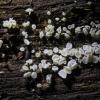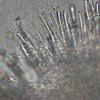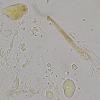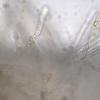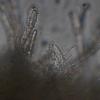
03-11-2025 21:34
 Edvin Johannesen
Edvin Johannesen
These tiny (0.4-0.5 mm diam.), whitish, short-stip

28-10-2025 15:37
Carl FarmerI'd be grateful for any suggestions for this strik

03-11-2025 16:30
 Hans-Otto Baral
Hans-Otto Baral
Hello I want to ask you if you have found this ye

28-10-2025 19:33
 Nicolas Suberbielle
Nicolas Suberbielle
Bonjour à tous,Je voudrais votre avis sur cette r

31-10-2025 09:19
 Lothar Krieglsteiner
Lothar Krieglsteiner
Can somebody provide me with a file of:Rogerson CT

09-08-2025 13:13
 Maria Plekkenpol
Maria Plekkenpol
Hello,Yesterday I found these on burnt soil. Apoth
Lachnum virgineum ?
Thierry Blondelle,
29-12-2023 10:16
 Hello
HelloJust a confirmation of Lachnum virgineum found on dead chestnut wood. Attached are the photos of the microscopy. Thanks.
Michel Hairaud,
29-12-2023 10:39

Re : Lachnum virgineum ?
Hi Thierry,
It seems that the last cells of the hairs you show are smooth , which would rather match Dasyscyphella intead of LAchnum
Or am I wrong ?
AmitiésMichel
It seems that the last cells of the hairs you show are smooth , which would rather match Dasyscyphella intead of LAchnum
Or am I wrong ?
AmitiésMichel
Thierry Blondelle,
29-12-2023 13:35
Thierry Blondelle,
29-12-2023 13:52

Re : Lachnum virgineum ?
Ain Raitviir's key which takes into account the length of the last article of the hair and the length of the spores leads to D. nivea.
Michel Hairaud,
29-12-2023 18:15

Re : Lachnum virgineum ?
D. nivea is a common species through all winter and can be found nearly systematically on lower faces of Quercus stumps or other hardwood.
Michel
Michel
Guy Marson,
30-12-2023 22:43
Re : Lachnum virgineum ?
Hi Thierry,
What various authors consider to be Lachnum virgineum consists genetically of 5 species, as can be seen in a small section of the ITS1 (-> screenshot of an ailgnment below).
What Lachnum virgineum really is cannot be identified genetically either, because the first description of Lachnum virgineum (Batsch) P. Karst. (1871) is too old to be sequenced.
What various authors consider to be Lachnum virgineum consists genetically of 5 species, as can be seen in a small section of the ITS1 (-> screenshot of an ailgnment below).
What Lachnum virgineum really is cannot be identified genetically either, because the first description of Lachnum virgineum (Batsch) P. Karst. (1871) is too old to be sequenced.
My best wishes for 2024 :).
Guy
Thierry Blondelle,
31-12-2023 08:23

Re : Lachnum virgineum ?
Thank you Guy for this update on Lachnum virgineum.
Best wishes too
Best wishes too

